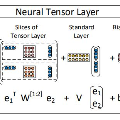The rapid deployment of low earth orbit (LEO) satellite constellations has drawn attention to the potential of nonterrestrial networks (NTN) in providing global communication services. Telecom operators are attempting to collaborate with satellite network providers to develop mobile satellite networks, which serve as an effective supplement to terrestrial networks. However, current mobile satellite network architectures still employ the single-anchor design of terrestrial mobile networks, leading to severely circuitous routing for users and significantly impacting their service experience. To reduce unnecessary latency caused by circuitous routing and provide users with low-latency global internet services, this paper presents SkyOctopus, an advanced multi-anchor mobile satellite network architecture. SkyOctopus innovatively deploys traffic classifiers on satellites to enable connections between users and multiple anchor points distributed globally. It guarantees optimal anchor point selection for each user's target server by monitoring multiple end-to-end paths. We build a prototype of SkyOctopus using enhanced Open5GS and UERANSIM, which is driven by actual LEO satellite constellations such as Starlink, Kuiper, and OneWeb. We conducted extensive experiments, and the results demonstrate that, compared to standard 5G NTN and two other existing schemes, SkyOctopus can reduce end-to-end latency by up to 53\%.
翻译:暂无翻译



